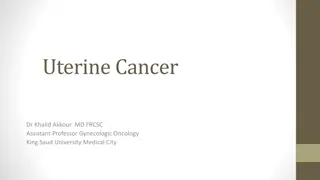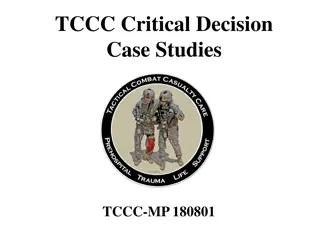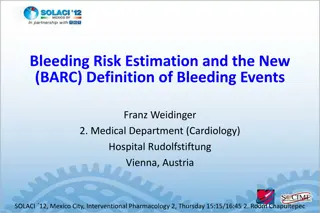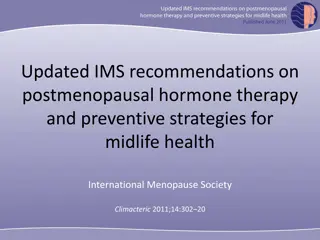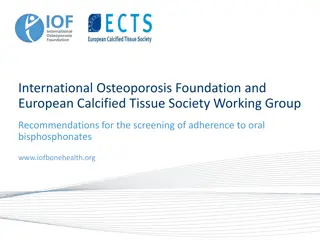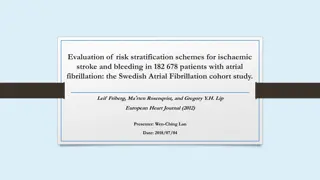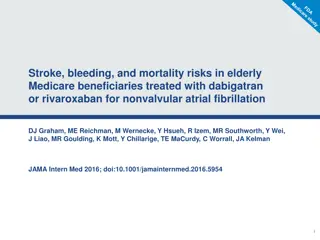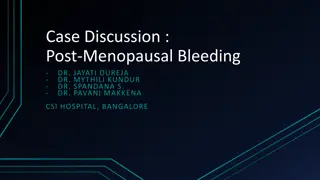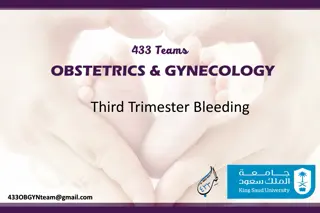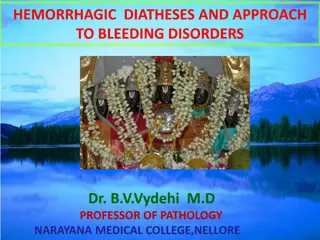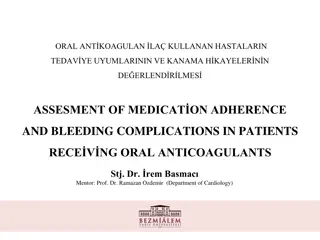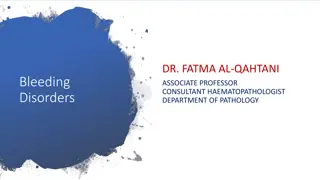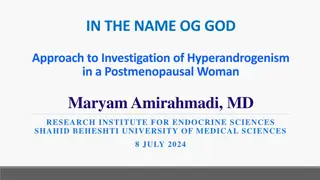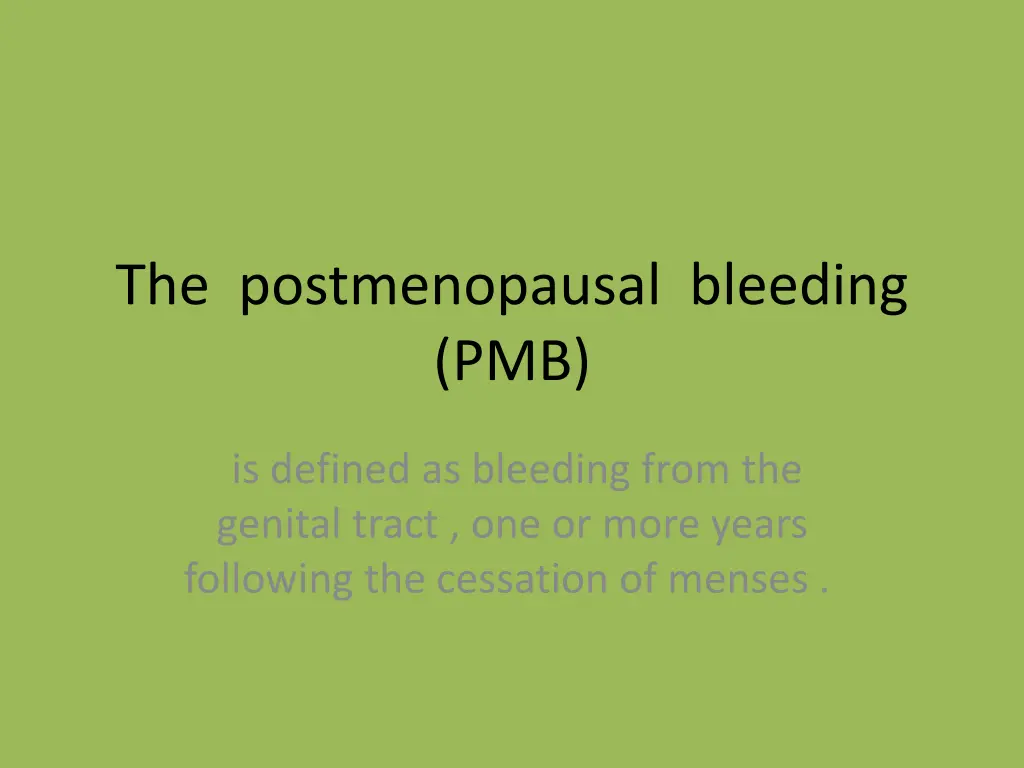
Understanding Postmenopausal Bleeding: Causes and Management
Postmenopausal bleeding (PMB) can be caused by various genital and extra-genital pathologies, with a potential of malignancy in some cases. Hyperplasia and atrophic endometrium are among the pathophysiological factors. Clinical assessment involves history, examination, and investigations like dilatation and curettage. Management varies based on the underlying condition, including hormone replacement therapy and surgical interventions like hysterectomy. Hysteroscopy offers advantages in diagnosing intrauterine abnormalities effectively.
Download Presentation

Please find below an Image/Link to download the presentation.
The content on the website is provided AS IS for your information and personal use only. It may not be sold, licensed, or shared on other websites without obtaining consent from the author. If you encounter any issues during the download, it is possible that the publisher has removed the file from their server.
You are allowed to download the files provided on this website for personal or commercial use, subject to the condition that they are used lawfully. All files are the property of their respective owners.
The content on the website is provided AS IS for your information and personal use only. It may not be sold, licensed, or shared on other websites without obtaining consent from the author.
E N D
Presentation Transcript
The postmenopausal bleeding (PMB) is defined as bleeding from the genital tract , one or more years following the cessation of menses .
Aetiology Genital and extra-genital pathology , both benign and malignant 12% of women with PMB have a primary or secondary malignancy 88% of women with PMB will have a benign cause Extra-genital pathology is found in 4%
Hyperplasia Simple ( cystic gland ) without atypia 1% Complex without atypia ( adenomatous) 3 Hyperplasia with atypia 8-29% %
Pathophysiology : *Atrophic endometrium : chronic endometritis , endometrial vascular disease , rupture of endometrial cysts , and venous bleeding following the blockage of venules by overdistended endometrial glands .
Clinical Assessment : History Examination : Investigations :
: Investigations Dilatation and Curettage Outpatient endometrial Biopsy Hysteroscopy Three-Dimensional Scanning Doppler and Colour flow Imaging Ultrasound
Special Situations : Hormone replacement therapy Tamoxifen
Management Atrophic vagnitis :HRT (Topical oestrogen cream, oestrogen pessaries , oestrogen ring pessaries ). Cervical polyp: Remove via speculum examination using polyp forceps . Endometrial polyp : Remove under direct visualization at hysteroscopy . Simple hyperplasia :Progesteron :oral preparations or LNG-IUS (Mirena) .
Management Complex hyperplasia : Progesteron :oral preparations or LNG-IUS (Mirena) . Atypical hyperplasia :Total abdominal hysterectomy as significant risk of progression to malignancy . Endometrial cancer: Total abdominal hysterectomy +BSO +washing adjuvant therapy .
Hysteroscopy Advantages : Direct inspection of endometrial &directed biopsy can be taken . Detect 95% of intrauterine abnormality. Sensitive in identifying uterine polyp or submucous fibroid (that are difficult to determine by U/S examination). Can be used as outpatient procedure& treatment be given in the same session can
Hysteroscopy Complications : Fluid overload . Hyponatremia . Uterine perforation. Infection . Cervical truma .


